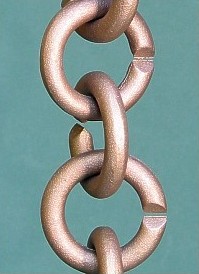Our thanks to guest critic Robert R. Reilly for contributing this review of the NSO's Mahler.

Thursday night, Iván Fischer embarked on his official duties as the principal conductor of the National Symphony Orchestra (for a two-year stint until Christoph Eschenbach takes over) with a performance of the Mahler Third Symphony. Anyone who had heard his performance last April of the Mahler Second with the NSO would not have been surprised at his interpretive choices – with their respective merits and demerits.
At that time, I described him as the master of pianissimo, and so he remains. (In case anyone did not know that the NSO can play like this, they can.) I also said that his perspective was the polar opposite of Bernstein’s hyper-angst tendencies. Fischer’s Mahler, in contrast, is solidly sane, and that is how he plays the music. This works particularly well in the Third because it is one of Mahler’s symphonies with the least amount of underlying anxiety.
However, as dreamy as the Third may be in places, Pan is supposed to awaken from his dream in the first movement. Fischer captured the somnolence of Pan in a very special way, or what Mahler called “Nature’s inertia.” I am not being sarcastic; I mean it. Others, like Klaus Tennstedt in his LSO recording, caught a minatory and threatening aspect to the music at the beginning of the first movement. Fischer actually shows us someone waking up and slowly throwing off slumber. Perhaps too slowly.
Yet, I recalled that Fischer likes to take his time laying in each musical strand with care and attention. He does not rush; he takes an chamber music-like approach to the delicate textures of Mahler’s quieter moments. But Fischer also knows how to build a climax, and he delivered the full punch of the first big climax.
The first movement – with 35 minutes on the broad side – was neither emotionally indulgent, nor was it given to any sense of wild Dionysian abandon. One gets the sense from Fischer that he is not only conducting the music, but listening to it at the same time. In other, words, he is in it and seeing it from the outside which gives his approach an ‘objective’ character.
Fischer’s approach came into its own in the remaining movements in which objectivity surrendered to beauty. The playing here was gorgeous. The charm of “what the flowers in the meadow tell me” was exquisite. In the middle of the third movement, Mahler called for playing “in the manner of a posthorn,” with a background of soft strings played “as if listening.” The NSO caught this magic to perfection. Special plaudits must go to posthorn player Steven Hendrickson.
Contralto Birgit Remmert, in her NSO debut, gave as moving a rendition of the Nietzsche text in the fourth movement as I have ever heard live. There is a kind of smoky richness to her voice that is perfect for this, especially when matched with the expressivity she conveyed. The University of Maryland Concert Choir and the Children’s Choir of Washington were admirable in the fifth movement’s expression of a kind of Christmas joy in the Wunderhorn text.
The strings of the NSO shone throughout, as did the timpani (playing true pianissimo when required) and winds. The brass, aside from a few flubs, came through in the big moments.
In sum: Seldom did one feel in the grip of anything inexorable, and one might have wished for a stronger interpretive stance, but so what? One could surrender to the sheer beauty of it. Which, if that is what Fischer wanted, he achieved.
The concert repeats on Friday, October 17 and Saturday, October 18.




























































